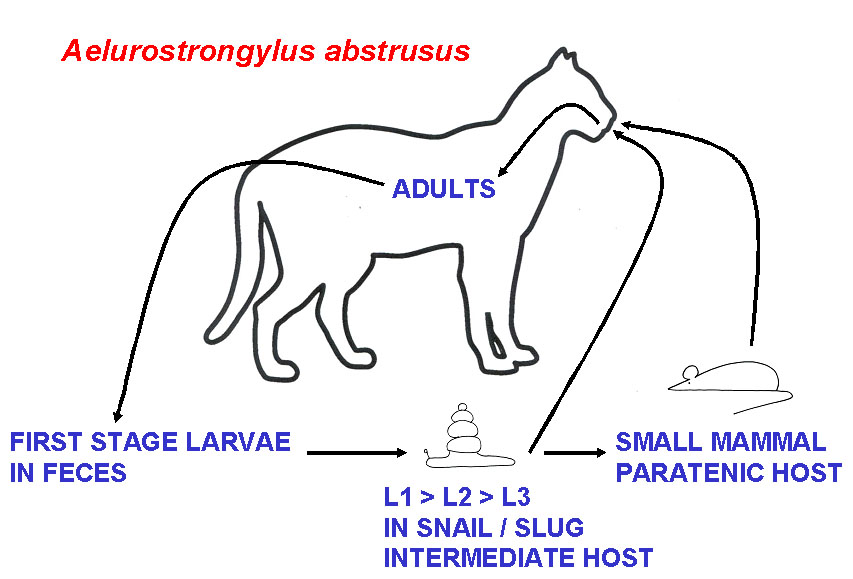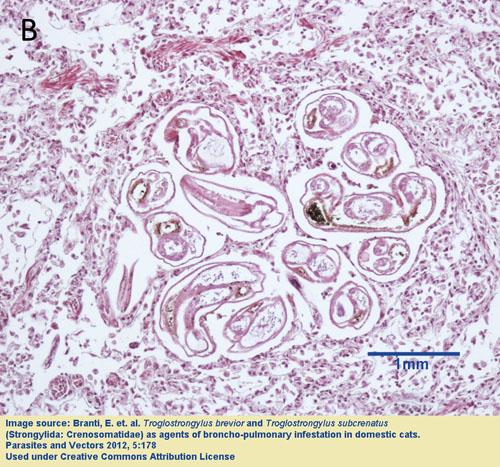Aelurostrongylus abstrusus
Aelurostrongylus abstrusus occurs in cats in many parts of the world, especially where it is warm and damp. The parasite is seen occasionally as a clinical problem in British Columbia.
Overview
Aelurostrongylus abstrusus is a lungworm of cats that is closely related to Angiostrongylus vasorum, the “French” heartworm of dogs and other canids. Aelurostrongylus abstrusus occurs in cats in many parts of the world, especially where it is warm and damp. The parasite is seen occasionally as a clinical problem in British Columbia, and has also been reported in Ontario and the Atlantic provinces in Canada. Adult Aelurostrongylus abstrusus live in the lung parenchyma, and are very small and fine, measuring up to approximately 10 mm in length. Usually they are seen only in histological sections of the lung. First-stage larvae from the feces are approximately 350 to 400 µm long and have a distinctive kinked tail with a dorsal spine. For the life cycle to continue, these larvae must enter a slug or snail intermediate hosts, in which they develop to the third stage, which is infective for the definitive hosts. If the infected gastropod is ingested by a suitable small mammal, or a frog or a lizard, these can serve as paratenic hosts. Infection of the cat is by ingestion of an infected intermediate or paratenic host. Following ingestion the larvae likely undergo a tracheal migration. The pre-patent period is 5-6 weeks.
Probably many cats with A. abstrusus show no adverse effects. The most common symptoms observed in infected cats in British Columbia are dyspnoea, wheezing and coughing. For diagnosis, the history, clinical signs and radiological findings may be helpful. Larvae can be recovered from feces using the Baermann technique; because shedding is sporadic, examimation of fresh fecal samples within a 3-7 day period is recommended. A trans-tracheal wash or bronchoalveolar lavage may be a better technique for larval recovery. The distinctive larvae of A. abstrusus are the only nematode larvae found in fresh cat feces in Canada.
No products are approved in Canada for the treament of A. abstrusus, but several drugs, including newer macrocyclic lactones and and fenbendazole (PANACUR), have been used extralabel. Control of A. abstrusus depends on preventing or limiting cats from hunting gastropods, rodents, frogs, and birds in emdemic regions.
Aelurostrongylus abstrusus is not known to be zoonotic.


References
Conboy G (2009) Helminth parasites of the canine and feline respiratory tract. Veterinary Clinics of North America Small Animal Practice 39: 1109-1126.
https://research-groups.usask.ca/cpep/parasites/metastrongyloid-lungworms.php

